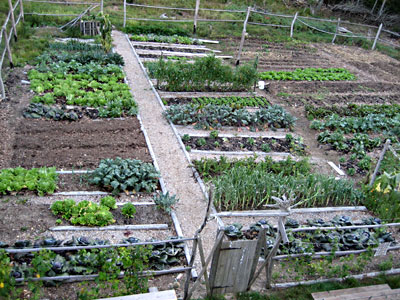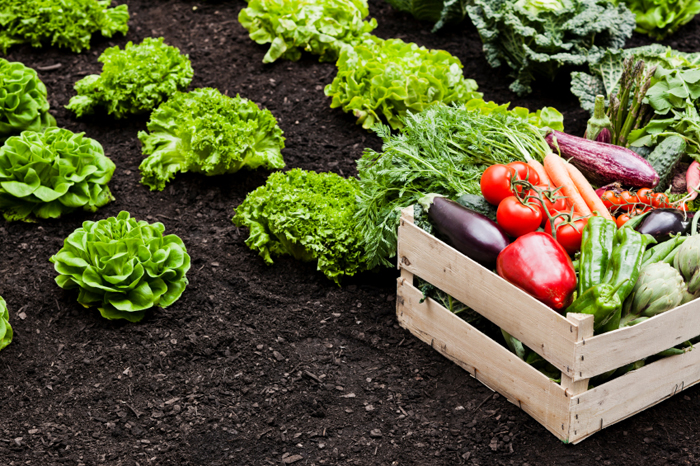Eco-Friendly Methods in Homestead Gardening
Eco-Friendly Methods in Homestead Gardening
Blog Article
Discover Essential Tips for Effective Horticulture Techniques and Practices
By focusing on crucial aspects such as soil wellness, effective watering strategies, and appropriate plant option, gardeners can create a growing environment that sustains lively growth. Several lovers neglect critical information that can make or damage their gardening success-- exploring these overlooked elements may reveal the trick to cultivating a growing yard.
Comprehending Soil Wellness
Dirt wellness is a fundamental aspect of successful gardening, as it directly affects plant growth, vitamins and mineral schedule, and ecological community balance. Healthy and balanced dirt is characterized by a rich biodiversity of bacteria, raw material, and a well balanced pH degree, which with each other develop a setting favorable to plant advancement.
To understand soil wellness, one must consider its physical, chemical, and biological residential or commercial properties. The appearance and framework of dirt affect its ability to retain wetness and nutrients, while the chemical make-up establishes the schedule of crucial components like phosphorus, potassium, and nitrogen. Regular soil testing is vital to assess these factors, enabling garden enthusiasts to make informed choices pertaining to amendments and plant foods.
Moreover, advertising biological task within the dirt is crucial for maintaining its wellness. Practices such as composting, plant turning, and using cover plants can boost microbial diversity, boost nutrient biking, and reduce soil disintegration. By focusing on dirt health and wellness, gardeners not just enhance plant development but additionally add to a sustainable community, ensuring that their horticulture practices are eco responsible and durable over time.
Effective Sprinkling Strategies
Making certain that plants get the appropriate quantity of water is vital for their wellness and growth, particularly when combined with a solid structure of dirt wellness (Homestead Gardening). Effective watering methods can significantly affect plant vigor, lowering water wastage and promoting optimum advancement
One basic approach is deep watering, which encourages roots to expand deeper into the dirt, improving drought resistance. This strategy commonly entails sprinkling less frequently yet in bigger amounts, enabling moisture to permeate the origin zone completely. Timing is additionally essential; early morning is the perfect time to water, as it minimizes dissipation and permits vegetation to completely dry throughout the day, decreasing disease risks.
Furthermore, employing compost can aid keep soil wetness and manage temperature, further aiding efficient sprinkling practices. Making use of a drip watering system can additionally give targeted wetness straight to the roots, ensuring that water reaches where it's most required while conserving resources.
Keeping an eye on rains and soil wetness degrees can direct adjustments in your watering timetable, ensuring plants obtain constant hydration without over-saturation. By embracing these reliable sprinkling strategies, garden enthusiasts can foster a flourishing environment for their plants to thrive.
Plant Selection and Positioning
Exactly how can the best plant option and tactical positioning change a garden into a prospering environment? When choosing plants, think about factors such as climate, soil kind, and sunlight direct exposure. Homestead Gardening.
Strategic positioning includes setting up plants according to their development practices and demands. Taller plants must be placed at the rear of boundaries to prevent shading shorter plants. Furthermore, grouping plants with similar water and light requirements can boost their growth and reduce competitors for resources.
Integrating a diversity of plants not only includes aesthetic charm however likewise advertises biodiversity, bring in helpful pests and pollinators. Consider the seasonal changes in your the original source yard; pick a mix of annuals, perennials, and evergreens to make certain year-round rate of interest.
Finally, keep in mind to examine the fully grown size of plants prior to growing to stay clear of overcrowding and make sure appropriate air flow. Thoughtful plant option and calculated positioning develop a harmonious atmosphere, permitting your yard to thrive while reducing obstacles.
Bug and Condition Administration
Reliable insect and disease monitoring is necessary for preserving a healthy and balanced garden ecosystem - Homestead Gardening. A proactive technique, incorporating social, organic, and chemical approaches, can dramatically minimize the influence of bugs Extra resources and illness on your plants

Biological controls, such as introducing useful insects like ladybugs or predative termites, can maintain insect populaces in check without damaging the environment. Additionally, keeping plant health and wellness via proper watering, fertilizing, and trimming will certainly bolster their resilience versus diseases.
When intervention is essential, choose targeted chemical therapies, making certain to adhere to application guidelines to minimize injury to non-target organisms. Always focus on lasting practices, as they advertise long-lasting garden health and eco-friendly balance. By integrating these methods, garden enthusiasts can effectively manage illness and parasites, making sure prospering plants and a productive yard.

Seasonal Maintenance Practices
In spring, focus on soil prep work by screening pH degrees and including essential amendments. Routinely check emerging plants for conditions and insects.
As summertime strategies, ensure ample watering while checking for indications of stress and anxiety or illness. Prune back thick plants to encourage air blood circulation and decrease humidity around foliage. This practice not only enhances plant health and wellness but also promotes blooming and fruiting.
With the arrival of autumn, it's time to prepare for winter. Tidy up fallen leaves and debris to protect against insect infestations, and take into consideration growing cover crops to improve dirt health. This period is additionally perfect for splitting perennials and additional reading growing spring-flowering light bulbs.
Verdict
Successful gardening hinges on the combination of audio methods in dirt wellness, watering, plant selection, parasite monitoring, and seasonal upkeep. By prioritizing soil screening and microbial variety, employing efficient sprinkling methods, and picking proper plants, gardeners can produce flourishing ecosystems.
By prioritizing important elements such as dirt health, efficient watering methods, and appropriate plant selection, gardeners can develop a flourishing community that sustains vibrant growth. By focusing on soil health, gardeners not only maximize plant development but additionally add to a lasting ecosystem, making sure that their horticulture techniques are durable and environmentally accountable over time.
Taller plants need to be positioned at the back of boundaries to avoid shielding shorter plants. Clean up fallen leaves and particles to protect against insect invasions, and think about planting cover plants to enrich dirt health and wellness.Effective gardening hinges on the assimilation of sound methods in soil health and wellness, watering, plant option, insect administration, and seasonal maintenance.
Report this page